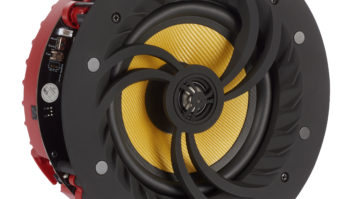Las Vegas – High-end home-audio
suppliers are embracing Apple’s AirPlay wireless-audio technology.
At International CES, home-speaker
supplier
launched the latest model in its Zeppelin series of iPod-docking speaker
systems, and
showed a
mockup of a tabletop AirPlay-equipped powered speaker system.
Component-audio suppliers Denon
and Marantz have already shipped home audio components with AirPlay. For its
part, iHome, the supplier of iPod-docking speakers, came to is at CES with its
own AirPlay-enabled $299-suggested iPod/iPhone-docking iW1, due sometime in
early 2011.
Equipped with AirPlay, home audio
products select and stream unprotected and Apple-protected via Wi-Fi or
Ethernet directly from a PC’s iTunes application. Song selection can also be
made remotely via Wi-Fi from a hand-held iPad, iPod Touch, or iPhone.
AirPlay-enabled home audio
products also stream music directly from iPads, iPods and iPhones via a home’s
Wi-Fi network.
With AirPlay, consumers can
stream a song from a networked PC to multiple AirPlay speakers simultaneously
to create a wireless multiroom-audio system with separate volume levels for
each room. When music is streamed from an iPad or iPhone, however, only one
AirPlay-equipped speaker at a time is able to play back the song, marketers
told TWICE.
AirPlay requires iTunes 10.1 or
later and the iOS4.2 on Apple’s mobile devices.
The AirPlay product from Bowers
& Wilkins is called the Zeppelin Air, which ships in March at a suggested
$599. It’s the first Zeppelin docking-speaker system speaker dock to offer
Apple’s AirPlay technology.
Although the DSP-equipped
2.1-channel device retains its predecessor’s zeppelin-like shape, the new model
adds such upgrades as individual amplifiers for each of five drivers and higher
power output at 4×25 watts plus 1×50 watts. DACs have been upgraded to
24-bit/96kHz, and an upgraded port delivers enhanced bass performance.
Although an iPad would fit in the
Zeppelin Air’s physical dock, which is mounted on an arm, Bowers & Wilkins
doesn’t recommend it because the arm might not support the iPad’s weight.
For its part, McIntosh went to CES to show a
mockup of a tabletop AirPlay speaker system that that it expects to ship in the
fall at around $2,000 or more. It would be McIntosh’s first product designed to
work with iPods, iPhones, or iPads.
The McIntosh model will feature biamplified
2.1 speaker system with two-way speakers and built-in ported subwoofer, Class
A/B amplification, and tentative power ratings of 70 to 100 watts per channel
with 150- to 200-watt subwoofer output.
The mockup also features analog
aux input and USB input, intended to stream music from a connected laptop or
PC.
Unlike the Zeppelin Air,
McIntosh’s mockup lacks Apple’s physical 30-pin connector that, when an Apple
device is docked, charges iPods/iPads and streams their music directly into a
speaker system. Nonetheless, iPods and iPads will be able to rest vertically on
top of the McIntosh speaker and connect via a short cable to the speaker’s USB
port for charging. McIntosh didn’t think an embedded dock was needed to play
back music because consumers would likely keep their iPod or iPod close by to
select music.













